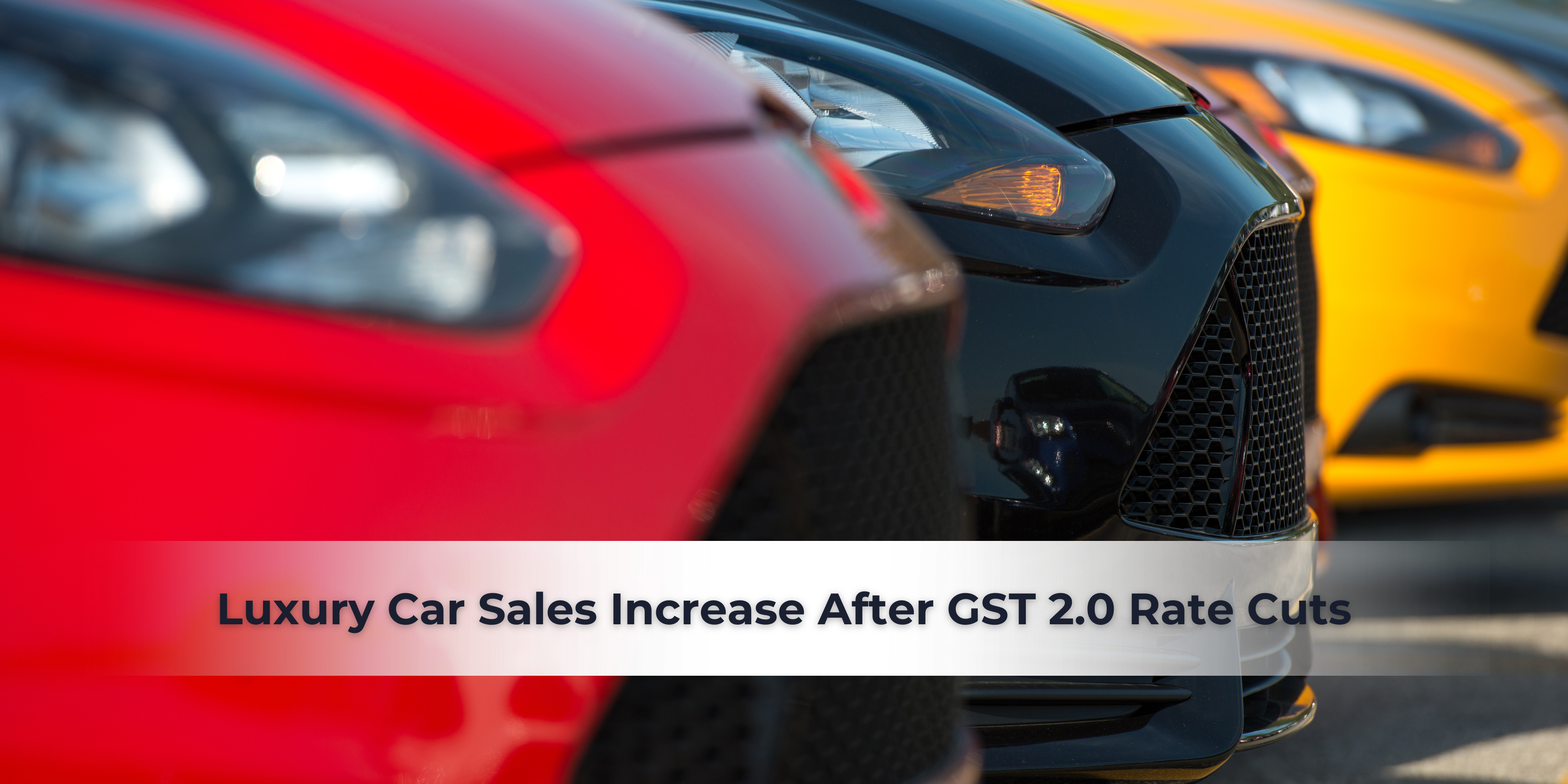The implementation of Goods and Services Tax (GST) 2.0 reforms and the associated tax rationalisation have triggered a noticeable rebound in the Indian luxury automobile market. Premium car brands reported strong upticks in bookings and deliveries, with buyers responding to a lower effective tax burden and clearer tax slabs.
This surge underscores how macropolicy changes, specifically the removal of a significant Compensation Cess, can rapidly influence niche luxury segments.
What’s Happening in the Luxury Auto Segment?

Following the GST 2.0 reform, which introduced a simplified tax structure, luxury vehicle manufacturers and importers reported increased demand. Crucially, the reform included the elimination of the Compensation Cess for this category, a move that drove improved affordability and accelerated buying decisions for high-end models.
Some of the key observations:
- Dealers of brands such as Mercedes-Benz, BMW, and Audi reported higher footfall across flagship models within weeks of the tax announcements, with some models seeing 3% to 10% effective price reductions.
- “Delayed buyers”, those waiting for a favourable tax window, entered the market, bridging the gap between intent and purchase.
- The simplified tax structure offers greater predictability for future pricing, a vital factor for high-net-worth individual (HNWI) purchases.
Why GST 2.0 and the Cess Elimination Are Important for Luxury Cars
Lower Effective Tax Burden from Cess Elimination
Luxury vehicles previously carried a 28% base GST plus a steep Compensation Cess, which could range from 15% to 22% (depending on engine/body type), pushing the effective tax burden to a high of 43% to 50% of the ex-showroom price. The latest tax rationalisation placed large cars and SUVs into a new, simplified 40% ‘Special GST Slab’ while eliminating the Compensation Cess. This translated directly into a net reduction of 3% to 10% in the final price for consumers.
Pricing Clarity & Buyer Confidence
Luxury car buyers place a premium on transparency and value perception. By moving the segment into a clear 40% slab and removing the complex, varying cess component, GST 2.0 fosters long-term buyer confidence. With fewer complex cost components to calculate, premium buyers feel more comfortable making large ticket purchases.
Incentivised Inventory Movement
 Manufacturers and dealers used the moment of price stability/reduction to clear older inventory, offer limited-time discounts, and launch refreshed models, creating a catalyst moment. For buyers, this meant more choice, better offers, and urgency to act before any potential minor price resets post-reform.
Manufacturers and dealers used the moment of price stability/reduction to clear older inventory, offer limited-time discounts, and launch refreshed models, creating a catalyst moment. For buyers, this meant more choice, better offers, and urgency to act before any potential minor price resets post-reform.
Luxury Car Brands Reaping the Benefits
The policy change has demonstrably improved the value proposition for high-end internal combustion engine (ICE) vehicles:
- Domestic luxury sedans and SUVs with large engine capacities, which previously incurred the highest 22% cess, benefited most from the switch to the flat 40% slab.
- Imports of fully built luxury models (CBUs) became slightly more viable as the domestic tax relief improved their competitive pricing against high import duties.
- Luxury brands successfully emphasised after-sales value, brand exclusivity, and limited edition batches, capitalising on the renewed buyer sentiment. Note: Luxury Electric Vehicles (EVs) remain unaffected by this change, as they already attract a significantly lower 5% GST rate.
Market Outlook & Considerations for Buyers
Timing Matters
If you’re planning a luxury car purchase, this may be one of the most favourable windows in recent years. The alignment of a lower effective tax rate, high inventory levels, promotional offers, and festive buying momentum (often cited by FADA data as a key driver post-reform) creates ideal buying conditions.
Evaluate Total Cost of Ownership (TCO)
While upfront pricing is improving, luxury cars still carry high running costs, insurance, premium fuel, service, and parts. Reduced acquisition tax is beneficial, but TCO still requires model-specific evaluation.
Evaluate Model Mix & Version Timing
With tax reforms, manufacturers are likely to update variants, launch special editions, or reposition older stock. Buyers should check for upcoming refreshes, which might offer better value or higher residual values.
Residual Value & Brand Health
A cheaper acquisition cost doesn’t guarantee value retention. Choose brands with stable global reputations, strong service networks, and limited edition models, which typically hold value better in the Indian market.
Final Verdict
The luxury car segment in India is experiencing a meaningful uptick in sales momentum, primarily driven by the removal of the Compensation Cess under the GST 2.0 rationalisation. For astute buyers, this policy-driven window offers improved financial conditions and stronger negotiating leverage. However, prudent buyers will still weigh running costs, brand value, and timing to ensure long-term satisfaction.
📌 Want to explore the best luxury car deals post GST reform? Contact the Motozite team today for exclusive listings, negotiation support, and future-proof buying guidance.




